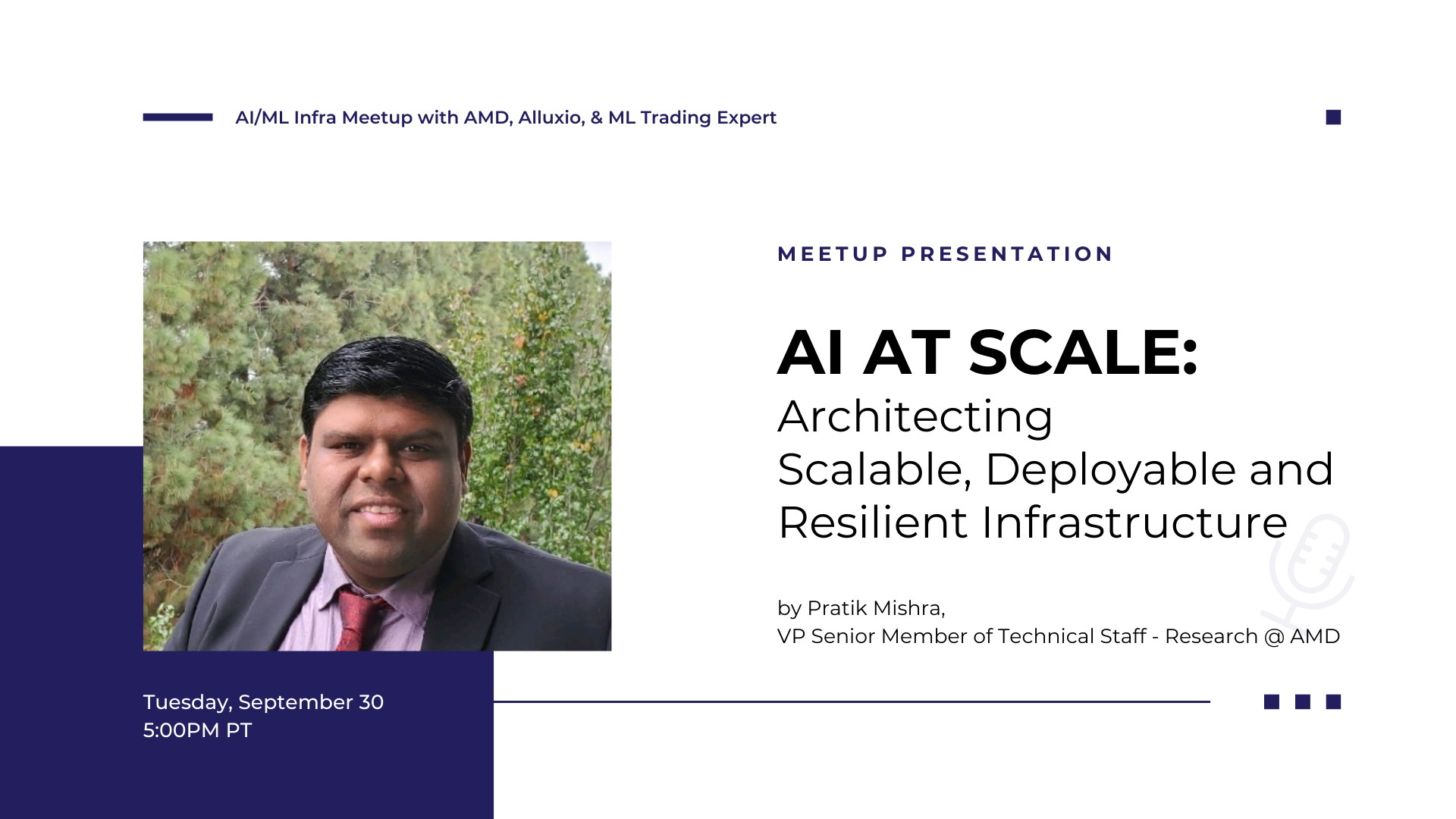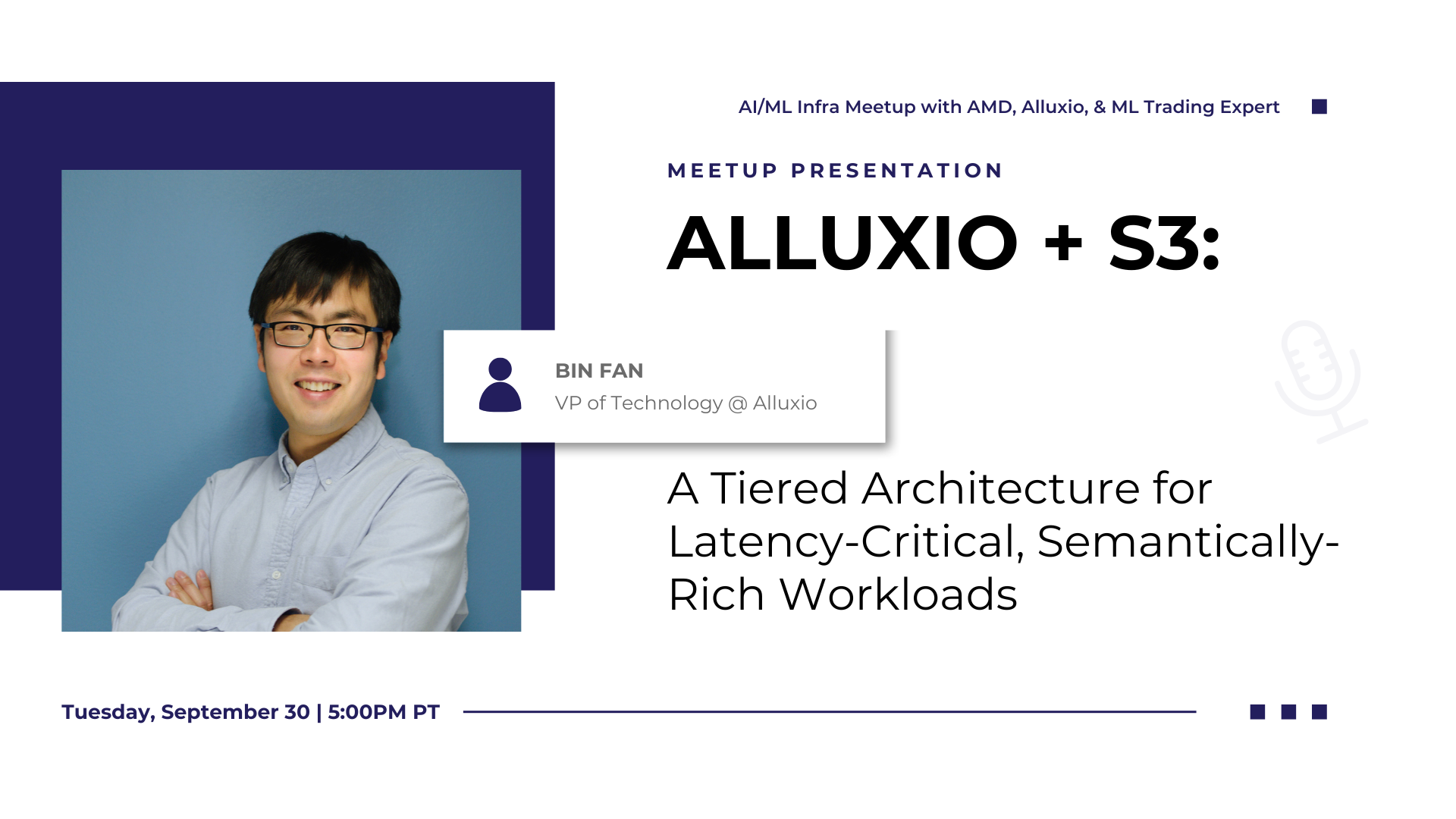Products
Alluxio for Machine Learning Workloads
June 24, 2021
ALLUXIO DAY IV 2021
June 24, 2021
Driven by strong interests from our open-source community, the core team of Alluxio started to re-design an efficient and transparent way for users to leverage data orchestration through the POSIX interface. We have introduced a new JNI-based FUSE implementation to support POSIX data access, as well as many improvements in relevant data operations like more efficient distributedLoad, optimizations on listing or calculating directories with a massive amount of files, which are common in model training.
ALLUXIO DAY IV 2021
June 24, 2021
Driven by strong interests from our open-source community, the core team of Alluxio started to re-design an efficient and transparent way for users to leverage data orchestration through the POSIX interface. We have introduced a new JNI-based FUSE implementation to support POSIX data access, as well as many improvements in relevant data operations like more efficient distributedLoad, optimizations on listing or calculating directories with a massive amount of files, which are common in model training.
Videos:
Presentation Slides:
Complete the form below to access the full overview:
.png)
Videos
AI/ML Infra Meetup | AI at scale Architecting Scalable, Deployable and Resilient Infrastructure

Pratik Mishra delivered insights on architecting scalable, deployable, and resilient AI infrastructure at scale. His discussion on fault tolerance, checkpoint optimization, and the democratization of AI compute through AMD's open ecosystem resonated strongly with the challenges teams face in production ML deployments.
September 30, 2025
AI/ML Infra Meetup | Alluxio + S3 A Tiered Architecture for Latency-Critical, Semantically-Rich Workloads

In this talk, Bin Fan, VP of Technology at Alluxio, presents on building tiered architectures that bring sub-millisecond latency to S3-based workloads. The comparison showing Alluxio's 45x performance improvement over S3 Standard and 5x over S3 Express One Zone demonstrated the critical role the performance & caching layer plays in modern AI infrastructure.
September 30, 2025
AI/ML Infra Meetup | Achieving Double-Digit Millisecond Offline Feature Stores with Alluxio

In this talk, Greg Lindstrom shared how Blackout Power Trading achieved double-digit millisecond offline feature store performance using Alluxio, a game-changer for real-time power trading where every millisecond counts. The 60x latency reduction for inference queries was particularly impressive.
September 30, 2025
